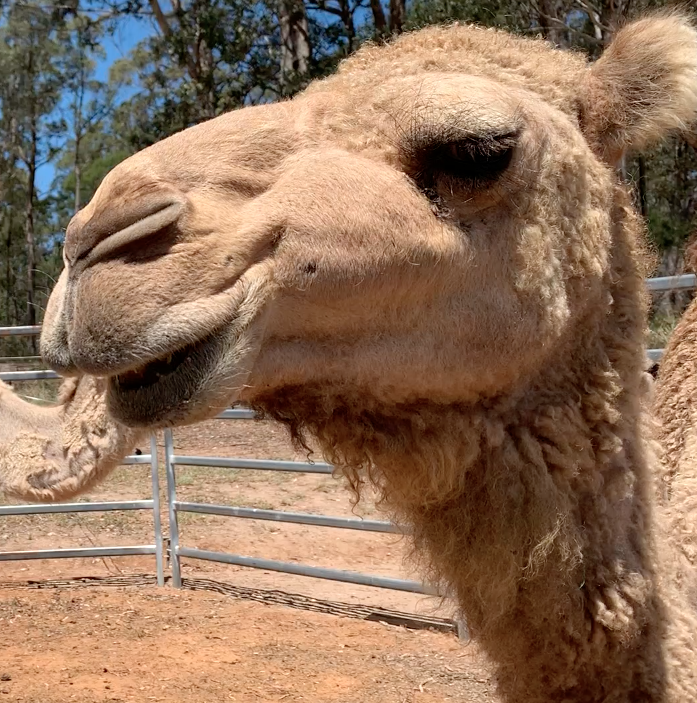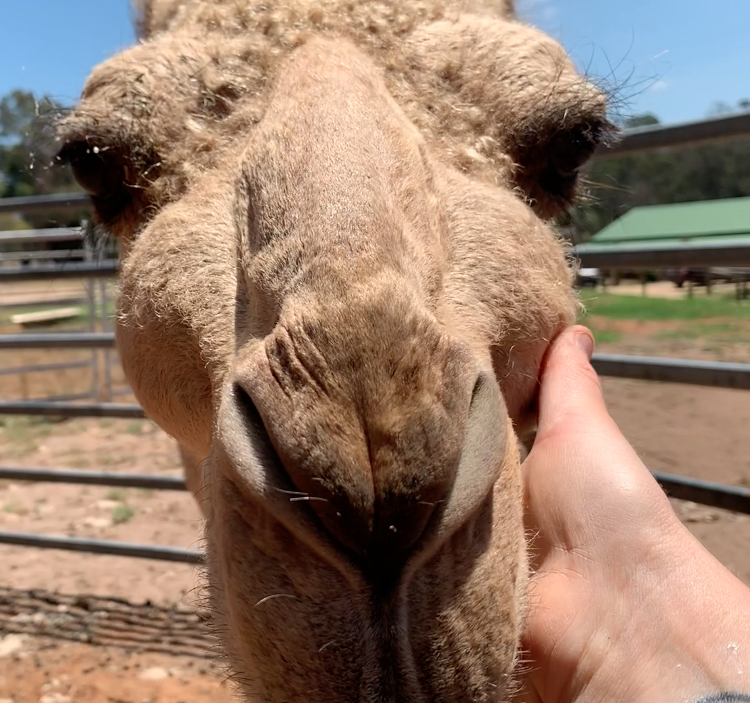Osteodystrophy (Big Head) in Camels: Treatment Recommendations
Oct 25, 2021
Disclaimer: These suggestions & recommendations are for educational purposes only, please consult an experienced veterinarian for advice & treatments on this disease.
ABOUT OSTEODYSTROPHY, AKA BIG HEAD, IN CAMELS:
Did you know that one of the most common diseases affecting camels in Australia and the USA can lead to severe facial deformities and even death if left untreated? This disease is called osteodystrophy, a chronic and non-contagious condition caused by a long-term deficiency in calcium and phosphorus.
Osteodystrophy refers to abnormal bone growth caused by an imbalance in calcium and phosphorus metabolism. In camels, this condition prevents proper absorption of these essential minerals, leading to weak bones and fibrous growths, especially on the facial bones near the cheeks (pictures below).
Signs and Symptoms
Camels suffering from osteodystrophy may show:
✅ Swelling or abnormal growths on the face (cheekbones)
✅ Weak or brittle bones, leading to fractures
✅ Difficulty chewing or eating
✅ Lameness or stiffness in movement
✅ General weakness or weight loss
✅ Anaemic (can check via the gums)
CAMEL OWNER WITH Osteodystrophy (Big Head) Camels
Unfortunately, I (Tara) have had too much experience with this awful disease in some of my camels, now having lost over 8 camels due to Osteodystrophy. It's a disease that isn't often talked about in camels, nor diagnosed soon enough for early intervention.
Osteodystrophy is commonly occurring more and more in camels as time passes, often misdiagnosed as tooth abscess amongst novice or amateur camel owners.
CAUSES & RISKS FACTORS OF OSTEODYSTROPHY IN CAMELS:
Osteodystrophy in camels is often caused by:
🔹 Diets lacking calcium and phosphorus
🔹 Imbalanced mineral ratios in feed
🔹 Poor-quality grazing land and feed
🔹 Parasite infestation
Causes can be hereditary, for instance if a female camel with a calf has osteodytrophy, then its highly likely the young camel has it. This expresses the importance of feeding domesticated camels the correct nutrition for their biological makeup.
Why Early Diagnosis Matters
If not managed properly, osteodystrophy in camels can lead to severe bone deformities, pain, and even death—especially if fibrous growths develop in the nasal cavity, causing breathing difficulties and suffocation. Early intervention is key to keeping your camel healthy and thriving.
If you suspect your camel has osteodystrophy, your local vet can provide a formal diagnosis. However, if you notice significant growths on the sides of your camel’s upper cheeks and are experienced enough to recognize the signs of OD, this can also be a strong indicator of the disease.


Pictures: Young camels with Osteodystrophy cellulose growths inside top of cheeks.
The good news is that osteodystrophy can be prevented (see additional resources and references below) and managed if diagnosed early. However, treatment options depend on the progression of the disease.
Osteodystrophy (aka Big Head) Treatment Recommendations For Camels
1. Educate yourself about osteodystrophy (also known as "Big Head") to better understand its causes and how to manage it based on the severity of your camel’s condition. Gathering information will help you make an informed decision on how to proceed to treat the camel involved. For in-depth insights, you can watch or listen to the Camel Vet Talk on this disease in The Camel Channel Academy membership portal (see reference below).
2. Purchase Feed Grade, Calcium Phosphate: P > 18%, Ca > 21%, F > 0.18% to feed the camel(s) to help compensate the malabsorption:
Feed the camel 2 tablespoons morning and night, in a feed mix, until symptoms/growths ease. This can take several months depending on the camel’s health and severity of the disease.
3. Along with the Calcium Phosphate, make sure the camel is getting a camel friendly mineral mix as a supporting supplement (see resources & references for Camel Mineral Mix Recipe).
Add 2 tablespoons, to morning & night of this mineral mix to the daily feeding regime (can be added with Calcium Phosphate).
4. Additional supplement: Anitone® (or similar product).
This is an Australian product but can be shipped. See references & resources.
5. Implement a strict and uncompromising parasite (worm) control program for camels with osteodystrophy.
Parasites drain essential nutrients from the camel’s body, further weakening an already diseased animal and often causing anaemia (occurs when the body lacks enough healthy red blood cells - some parasites feed off blood) . Since nearly 100% of domestic camels carry some level of parasite load, an infected camel’s condition can deteriorate rapidly without proper parasite management.
Regularly (& correct) parasite tests must occur to give the camel the best chance of survival and disease suppression (see reference below for more info).
CONCLUDE:
Managing and treating Osteodystrophy (Big Head) in camels requires dedicated care, especially in the early stages of diagnosis and treatment. I’ve personally cared for a camel on the brink of death due to OD, and now, after proper management, all symptoms and fibrous growths have suppressed, leaving him healthy and happy, but not without the fibrous growths in nasal cavity.
Ongoing effects of Osteodystrophy:
Once a camel has this disease, it is incurable, but it can be managed with the right treatments.
Additionally, a camel with Osteodystrophy is not suitable for heavy work, such as riding or packing, due to the permanent impact on their bone density and overall health.
For more detailed information & treatments on Osteodystrophy (Big Head) in Camels:
- What is Osteodystrophy (also known as "Big Head") in camels
- What causes Osteodystrophy (Big Head) in Camels
- How to prevent Osteodystrophy (Big Head) in Camels
- What a camel with Osteodystrophy future looks like
- Necessary supplement feeding required,
Listen or Watch the Camel Vet Talk in The Academy
RESOURCES & REFERENCES For Osteodystrophy (Big Head) in Camels:
- Camel Mineral Mix Recipe (Located in The Academy and my book Introduction to Camels Husbandry)
- Parasite (worm) Control Program for camels: Outline, treatments & preventions (Located in the The Academy)
Get Your Free Copy:
Introduction to Camels eBook
We hate SPAM. We will never sell your information, for any reason.



